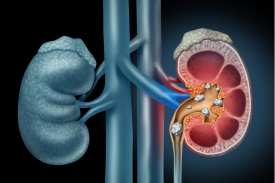Advantages of Laparoscopic Urological Surgery: Modernizing Treatment Methods
In recent years, the field of urology has witnessed a remarkable transformation with the introduction and widespread adoption of laparoscopic surgery techniques. Traditional urological surgeries, which often involve large incisions and prolonged recovery times, are gradually being replaced by minimally invasive laparoscopic procedures. This shift is driven by the numerous advantages that laparoscopic urological surgery offers over its conventional counterparts. Let’s delve into these benefits to understand why more patients and healthcare providers are choosing laparoscopy.
- Minimally Invasive Approach: Laparoscopic urological surgery utilizes small incisions, typically less than an inch in length, through which specialized instruments and a camera are inserted into the body. This minimally invasive approach contrasts starkly with traditional open surgeries, which require larger incisions to access the affected area. As a result, laparoscopic procedures cause less trauma to surrounding tissues, reduce blood loss, and minimize postoperative pain.
- Faster Recovery Time: One of the most significant advantages of laparoscopic urological surgery is its shorter recovery period compared to traditional methods. With smaller incisions and reduced tissue trauma, patients experience less pain and discomfort following the procedure. Consequently, they can return to their daily activities, including work and exercise, much sooner than those undergoing open surgery. This accelerated recovery not only enhances patient satisfaction but also reduces healthcare costs associated with prolonged hospital stays and rehabilitation.
- Reduced Risk of Complications: Laparoscopic techniques offer greater precision and magnification, allowing surgeons to perform intricate urological procedures with enhanced accuracy. By minimizing inadvertent damage to surrounding organs and tissues, laparoscopic surgery lowers the risk of complications such as infections, bleeding, and nerve damage. Moreover, the improved visualization provided by laparoscopic cameras enables surgeons to identify and address anatomical variations more effectively, further reducing the likelihood of surgical errors.
- Improved Cosmetic Outcome: Unlike traditional open surgeries that leave large scars, laparoscopic procedures result in minimal scarring due to the smaller incisions. These tiny incision sites are strategically placed and often located in inconspicuous areas, such as the natural folds of the skin. As a result, patients undergoing laparoscopic urological surgery can enjoy a more aesthetically pleasing outcome, with scars that are less visible and fade over time.
- Enhanced Patient Comfort: Laparoscopic surgery offers patients a more comfortable experience throughout the treatment process. The smaller incisions cause less tissue damage and nerve disruption, resulting in reduced postoperative pain and discomfort. Additionally, laparoscopic procedures typically require shorter hospital stays, allowing patients to recover in the comfort of their own homes sooner. This aspect is particularly beneficial for elderly patients or those with underlying health conditions who may be more susceptible to the stressors associated with prolonged hospitalization.
- Comparable Clinical Outcomes: Despite being less invasive, laparoscopic urological surgery maintains comparable clinical outcomes to traditional open procedures. Numerous studies have demonstrated that laparoscopic techniques achieve similar success rates in terms of oncologic outcomes, functional outcomes, and long-term disease control. This equivalence in efficacy, coupled with the aforementioned advantages, underscores the growing preference for laparoscopic approaches among both patients and healthcare providers.
In Pune, , Dr. Rajesh Dhake, a renowned Laparoscopic Urosurgeon, has been at the forefront of advancing laparoscopic urological surgery. As a leading expert in the field, Dr. Dhake specializes in performing complex laparoscopic procedures with precision and skill, ensuring optimal outcomes for his patients. He practices at the prestigious Pune Institute Of Nephro Urology (PINU), widely recognized as one of the best urology hospitals in Pune. Under Dr. Dhake’s expert care and the state-of-the-art facilities at PINU, patients receive world-class treatment for a wide range of urological conditions using advanced laparoscopic techniques.
Summary:
In Summary the advent of laparoscopic urological surgery represents a significant advancement in the field of urology, offering patients a safer, more efficient, and less invasive alternative to traditional open procedures. By harnessing the benefits of minimally invasive techniques, surgeons like Dr. Rajesh Dhake at PINU in Pune can provide optimal care while minimizing the physical and psychological burden on patients. As technology continues to evolve, the future of urological surgery undoubtedly lies in further refining and expanding the applications of laparoscopic approaches, ultimately improving outcomes and quality of life for individuals requiring urological interventions.




